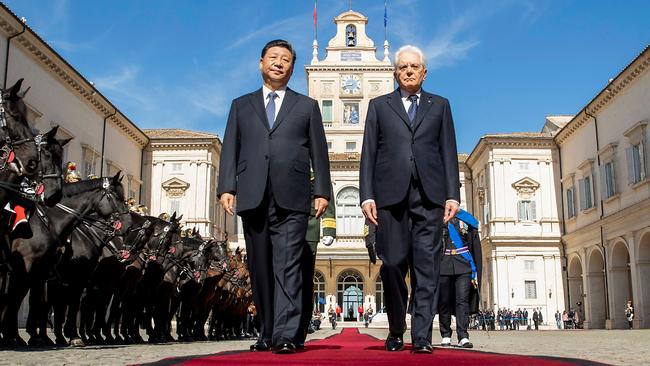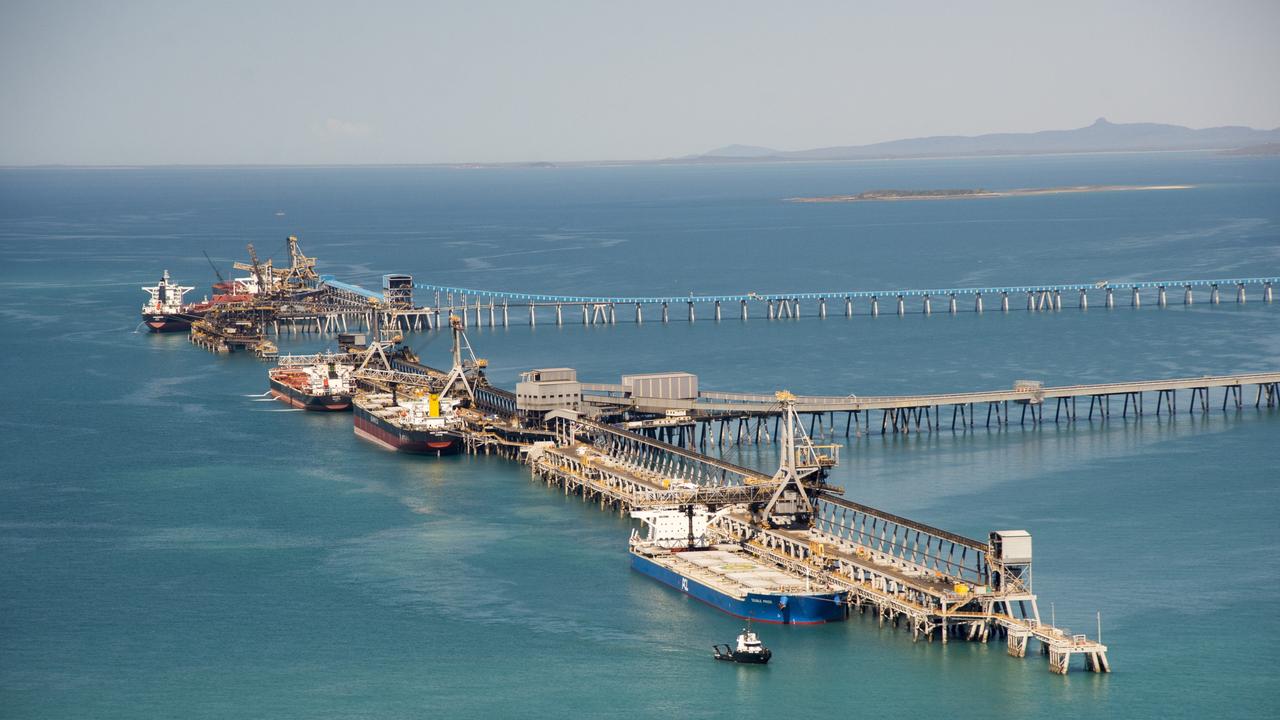Xi gets down to business
Beijing must allow more input to ease concerns over its Belt and Road initiative.

The world is increasingly splitting into two forms of globalisation — liberal democratic and authoritarian camps — with next month’s Belt and Road Initiative summit in Beijing set to cement President Xi Jinping’s role as head of the latter.
This places the business community, whose prime aim is to trade in the most efficient and productive way, in a contentious spot.
The contention is being highlighted during Xi’s visit to France, Italy and Monaco. Italy is signing up to BRI, and Pope Francis has cut a deal with Beijing. But the European Union is shifting its position to distance itself, branding Beijing a “systemic rival,” and “a strategic competitor” economically rather than a partner.
This period marks a deep change from the years after the collapse of the Soviet Union, when it appeared that countries were converging on the same page, and companies competing within similar political, economic and even cultural settings.
China even then provided the greatest challenge to liberal democratic norms, in terms of its priorities and capabilities.
But it was “biding its time and hiding its power”, as advised by Deng Xiaoping.
Late in 2012, the force of nature that is Xi took the helm, and much changed. He has pressed his party-state to seize the hour, if China is to get rich before it is to get old, and if it is to fulfil the “China dream” of rejuvenation that will redeem its “century of foreign humiliation”.
The Deng era is over. This is a “New Era”, as Xi stresses.
It is different from the Cold War era when the USSR sought to create a bloc that was physically distinct from the West, with only minimal mutual contact.
Today the People’s Republic and Chinese people and their products are everywhere. The key issue is not whether to engage, but on whose terms.
The signature strategy of engagement is Belt and Road — an ingenious rebadging of China Inc that has succeeded in some places while suffering setbacks in others, including jeopardising longer established Chinese connections.
An Economist article reviewing a series of books on these Silk Roads to everywhere, says: “The gratitude and dependency of others are convenient for China as it seeks to recycle its foreign surplus, employ its workers on construction sites abroad, secure raw materials and fob off low-grade production on to others so that it may keep the best hi-tech manufacturing and services at home.”
It says: “The Trump administration calls this approach ‘debt-trap diplomacy’. But that misses the appeal for many recipients of Chinese largesse. For a start, no one else is offering so much of it.”
The BRI was indeed a good idea. Central Asia needs infrastructure if it is to develop as its populations hope. And China has developed expertise in this area.
However, the conceptualisation of BRI projects has not been sufficiently inclusive — the communities intended to be the beneficiaries should be involved in the planning from the start. That’s a very definition of development — people taking charge of their own lives.
And no clear path has been developed of how such projects are to be badged as “BRI”, how funding is to be organised, or how consortia are to be assembled to ensure the best implementation.
It is clear that under BRI instead of all roads leading to Beijing, the intention is for all regulations, templates and systems to lead to Beijing. Thus the existential angst on Beijing’s part about Huawei, even though it claims to be just a private company. Its role as a setter of standards, especially in the rollout of 5G and thus also of the settings for artificial intelligence and big data, is central.
In contrast to such controversy, the Beijing-based Asian Infrastructure Investment Bank has quietly attracted growing respect, including for its professionalism and for its genuine opening to international inputs. It provides a good model of how the BRI could be re-engineered.
Australian companies could make useful contributions to BRI projects, enhancing efficiency and providing confidence among recipients that global standards are being applied.
But so far the lack of a clear pathway to involvement — such as through public tendering — means that despite investing substantial time and effort in trying to become involved, few if any have succeeded.
Within China, some people are also expressing misgivings about resources being sent overseas when pockets of need remain within China.
The second BRI summit will be a great success within its own terms. But for it to be viewed as such within the wider world will require more openness to international input, and a clearer pathway to badging, funding and implementation.
Another hallmark Xi program, Made in China 2025, while intended to develop Chinese industrial self-reliance, also risks antagonising some business partners by disrupting the great Asian value chains in which China has typically played the assembly role.
But this program is being de-emphasised as settlement is sought with that other great destabiliser, Donald Trump.
While the US elite is in general rethinking its relationship with China — in part because it had fooled itself into believing that modernisation means Westernisation and now feels somehow betrayed — Trump himself remains transactional, more interested in “reciprocity” than in championing liberal democratic values.
Meanwhile, China is steadily gaining ground in global governance platforms. Last Friday, for instance, the UN Human Rights Council praised it for advancing the human rights cause — Xinjiang’s re-education camps seemingly viewed as like boarding schools.
But Beijing also prefers to isolate itself from potentially destabilising forms of globalism such as the internet, instead installing “cyber sovereignty”.
So, a complex scenario, made more so as the great global conglomerates, led today by the tech giants like Google, Facebook and Apple, for which values are largely of no greater interest than for Trump, struggle ever harder to bestride the growing global divide.




To join the conversation, please log in. Don't have an account? Register
Join the conversation, you are commenting as Logout